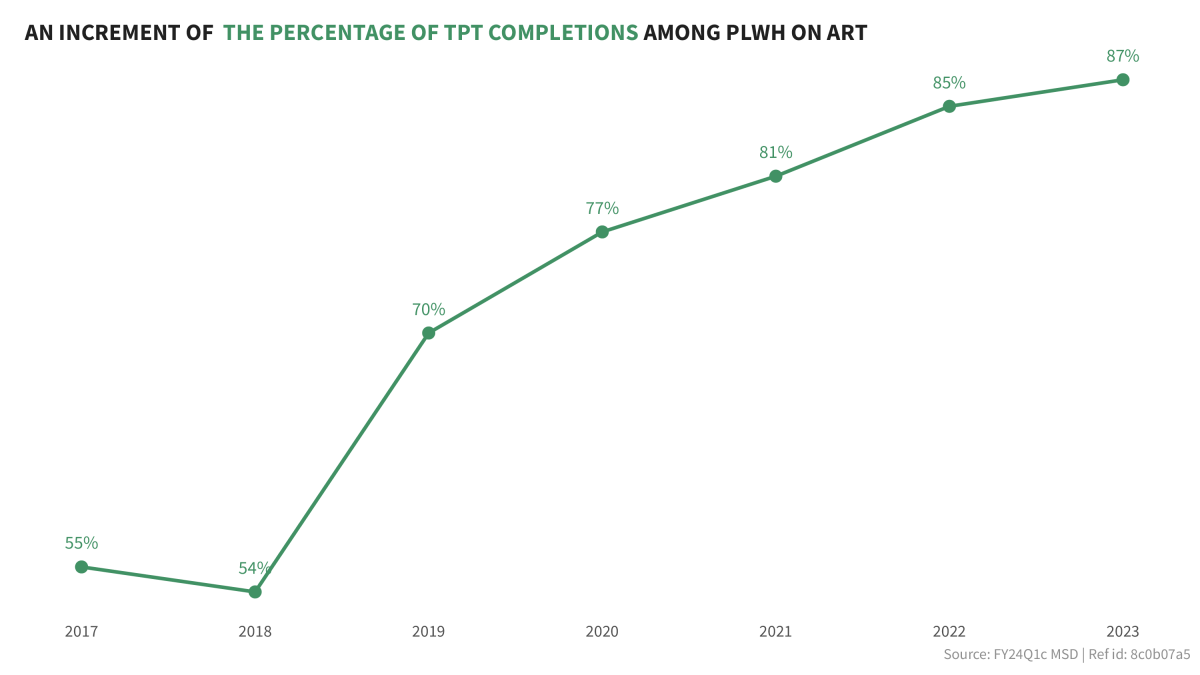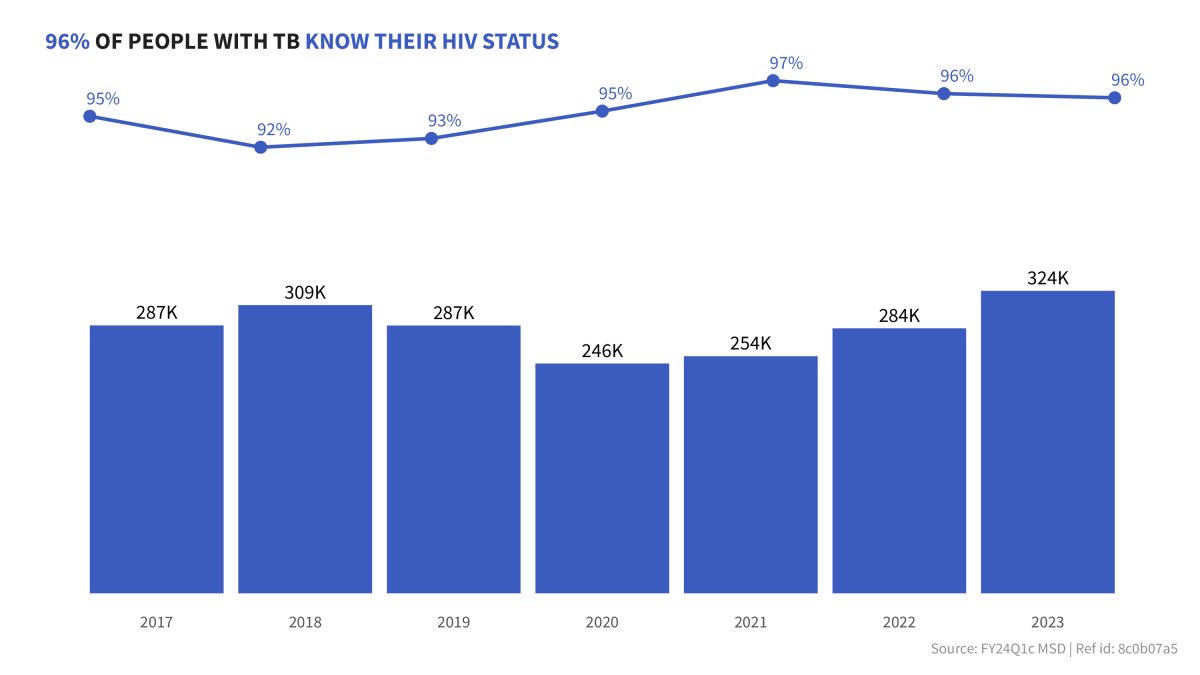Tuberculosis (TB) remains one of the world’s deadliest infectious diseases. The risk of developing TB among the millions of people living with HIV is 18 times higher than in the rest of the global population. An estimated six percent of the reported TB cases in 2022 were among people living with HIV (, and 167,000 TB deaths were among HIV-positive people. TB remains the overall leading cause of death among people living with HIV, accounting for around one third HIV-related deaths. HIV and multidrug-resistant TB (MDR-TB) are a particularly deadly combination. Even with early diagnosis and treatment initiation, people living with HIV with MDR-TB are more likely to die.
Because of the significant risk presented to both individuals and programs, addressing the dual TB and HIV epidemics is a top priority for the USAID, the U.S. President’s Emergency Plan for AIDS Relief (PEPFAR), and for national TB and HIV programs globally. Ensuring that HIV-positive individuals are screened, tested, and, as necessary, referred for and started on treatment or preventative therapy for TB is key to simultaneously combating these epidemics.
USAID’S RESPONSE
Since 2000, USAID and partners have saved more than 75 million lives globally, including 13 million lives of people living with TB and HIV.
USAID leads the U.S. Government’s global TB efforts, working with agencies and partners around the world to reach every person with TB, cure those in need of treatment, prevent the spread of new infections, and stop the progression to active TB disease. USAID is a key implementer of PEPFAR programs to address the specific challenges presented by TB/HIV by implementing collaborative TB/HIV activities to make progress on:
- Assisting with establishing and strengthening the mechanisms for coordination of TB and HIV activities and services;
- Decreasing the burden of TB among people living with HIV;
- Decreasing the burden of TB among HIV in individuals; and
- Initiating early antiretroviral treatment for people living with HIV with active TB disease to increase survival and improve quality of life;
USAID also works closely with the Global Fund to Fight AIDS, Tuberculosis and Malaria (Global Fund) and National TB and HIV Programs to further maximize the impact of the Global Fund’s TB and TB/HIV grant portfolio.
USAID works with partners and local governments in all PEPFAR-funded countries to implement interventions that scale-up effective TB/HIV interventions aimed at reducing the burden of TB for people living with HIV.
USAID’s TB program focuses on reducing the HIV burden among people with TB. Our efforts ensure that individuals with TB know their HIV status via testing during TB clinic visits and that HIV-positive individuals with TB are linked to care and to receive antiretroviral therapy (ART) as appropriate.
2023 Achievements
In Fiscal Year (FY) 2023, PEPFAR-funded TB/HIV activities through USAID programs reported:



Bureau of Global Health Security and Diplomacy- PEPFAR Launches new initiative to find all missing TB diagnosis among people living with HIV
In 2023 as part of the United Nations High Level Meeting, PEPFAR launched an effort to detect two million active tuberculosis (TB) cases over the next five years and prevent at least 500,000 TB-related deaths among people living with HIV. This is to cover the diagnostic gap that, according to estimates, shows that more than half of the current TB cases among people living with HIV are not detected or diagnosed. For this initiative, PEPFAR and its partners, including USAID, are committed to improve TB screening with enhanced technology, including chest c-rays (CXR) and molecular testing (mWRD), TB treatment coverage and TB preventive treatment to people living with HIV.
ADDITIONAL RESOURCES
To learn more about how USAID works closely with host countries, other U.S. Government agencies, and international partners to reduce the morbidity and mortality associated with TB and TB/HIV, please visit:
- USAID TB Division Webpage
- USAID Office of HIV and AIDS Webpage
- Success Story: Improving Diagnostics and Labs in Zambia
- PEPFAR Official Website
- PEPFAR Launches new effort on TB/HIV
- PEPFAR MERS indicator reference guide
